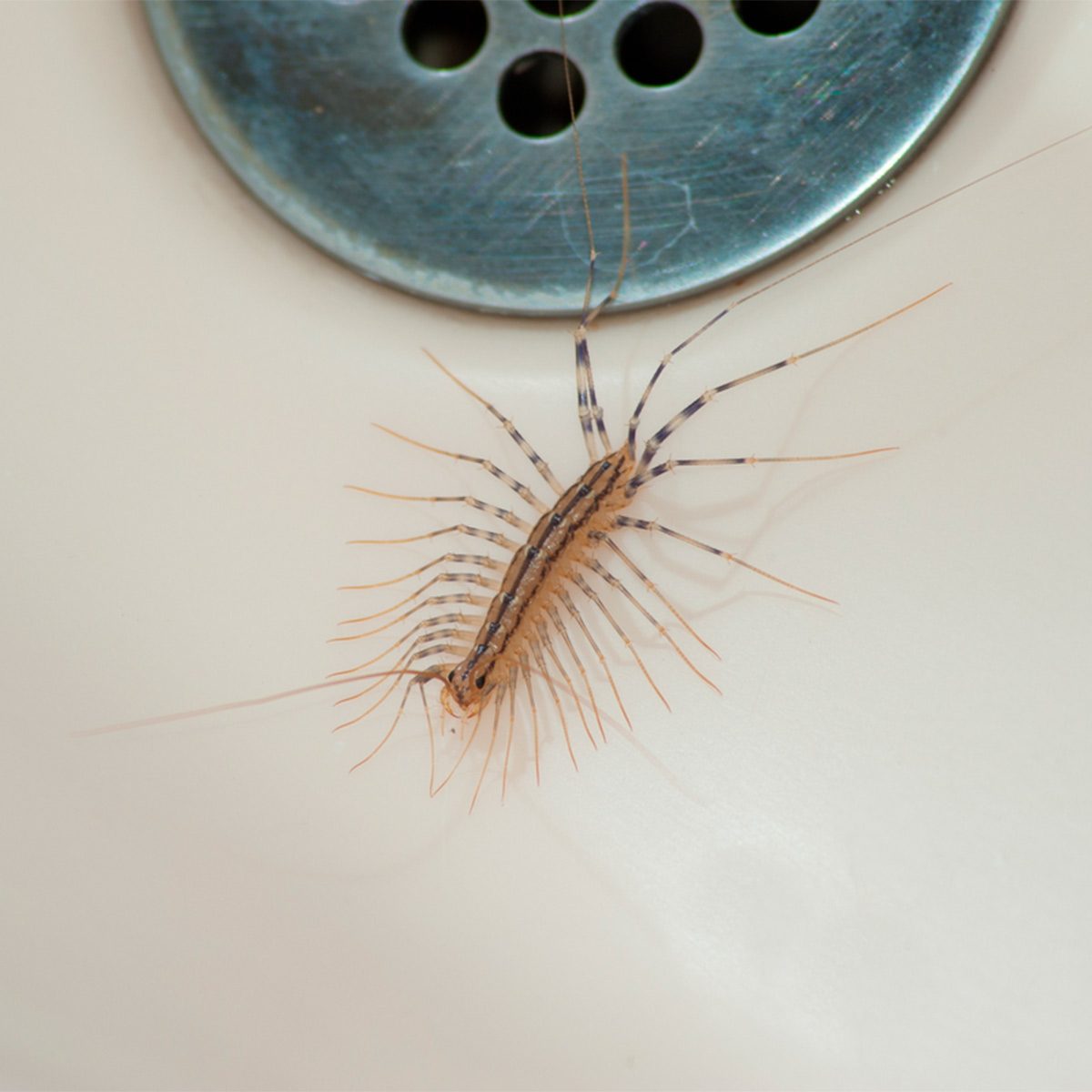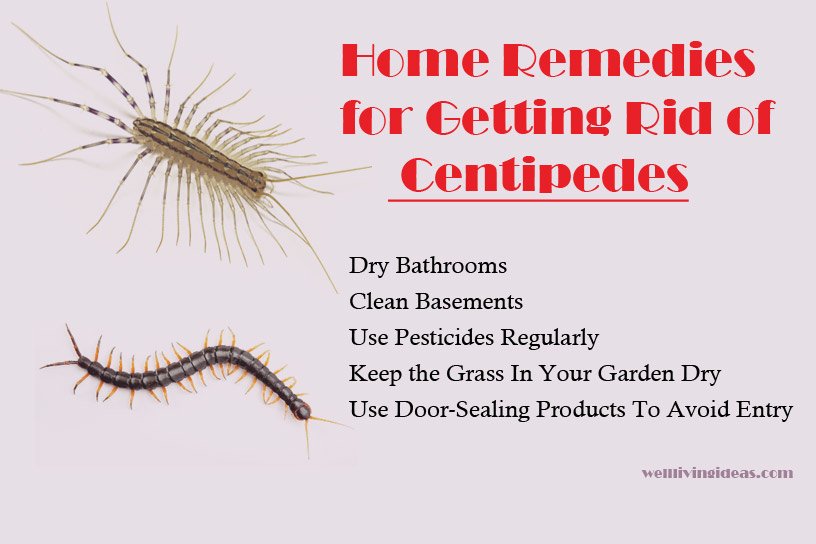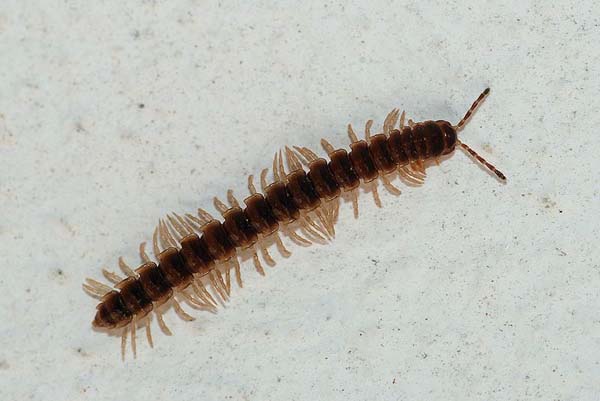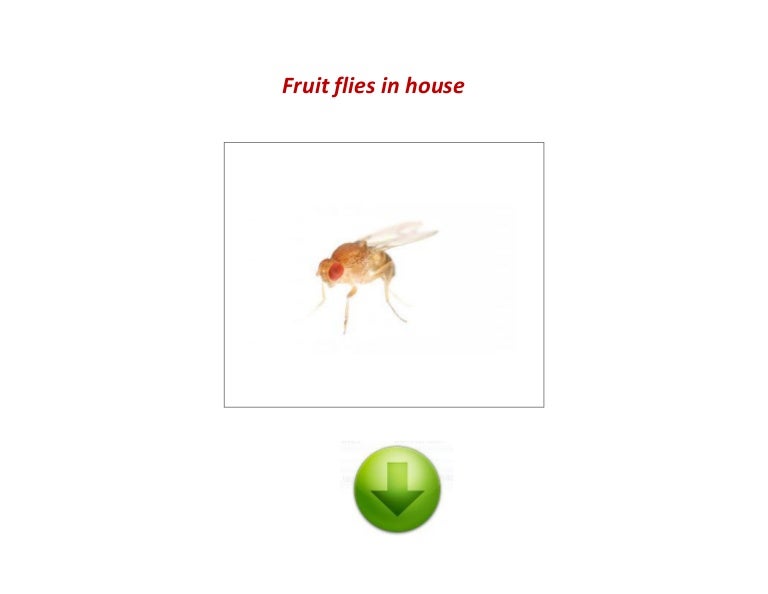Table Of Content
- How To Get Rid of a House Centipede Infestation
- How To Get Rid Of Centipedes
- Hiring a Pest Control Company
- Clean up damp areas
- These 13 Pests Do the Most Damage to the Home
- Are there any natural repellents that can deter house centipedes from entering my home?
- The 10 Best Centipede Traps to Catch Pests in Their Hiding Places

While boric acid is not considered to be life-threatening for humans, it is still a harsh chemical that can damage your skin. Be sure to read the product’s recommended areas of use before you begin applying it, and make sure that you use gloves during application. Keep children and pets away from any areas where you use boric acid.
How To Get Rid of a House Centipede Infestation
A combination of all of these measures is likely to reduce any centipede population you have. This powdered substance made from crushed insect exoskeletons is a very effective remedy for all kinds of indoor pests. The microscopic jagged edges of the powder pierce the body of the house centipedes and also dry out the fat and oils contained inside, slowly killing them. Sprinkle liberally around cracks, door thresholds, and in corners, especially in damp areas.
How To Get Rid Of Centipedes
Residents may see them in basements, closets, or bathrooms, sometimes even in tubs or sinks. House centipedes will prey on insects that are in the same areas. Learning about the common causes of centipedes and taking proactive DIY measures can help you get rid of and prevent infestations. Most homeowners are well-equipped to handle centipedes on their own by reducing humidity, sealing entry points, and applying barrier treatments. However, you can also invest in professional pest control for added peace of mind and ongoing service.
Hiring a Pest Control Company
Since their diets consist of only insects, arachnids, and other arthropods, it’s safe to say they aren’t going to go after you or have any desire to hurt a person. A brown, yellowish color, they have dark stripes down their bodies and pale legs. They are greyish yellow with three dark stripes running the length of their back.
As a matter of fact, many people inform you not to bother them, because they generally get rid of other pests in your home. From the common silverfish, even to pesky spiders, these creatures are what is called insectivores, so they only eat other insects. They also feed on mites, bed bugs, crickets, termites, ants, and many other small insects, and are actually helpful in a home if there are only a few. And being harmless, they are nothing more than a nuisance in most cases. Professional exterminators use boric acid for a wide range of pests, including house centipedes. Although it is advertised for roaches and ants, boric acid is boric acid and this product works great for house centipedes.
How House Centipedes Could Indicate You Have a Bigger Pest Problem - Realtor.com News
How House Centipedes Could Indicate You Have a Bigger Pest Problem.
Posted: Fri, 03 Jan 2020 08:00:00 GMT [source]
Clean up damp areas
Their presence may indicate that you have a moisture or insect problem, but they do not cause any damage themselves. Landmark Home Warranty explains that if you see centipedes everywhere, there really could be a problem. So if you have tried all other options, a professional will know the proper techniques to rid the centipedes from your home once and for all. 'Peppermint and tea tree do disrupt pest scent trails, pheromones, and sensory organs, and yes, they can even help kill a pest on contact. Centipedes are no exception,' begins Allan Bossel of Michigan Bed Bug Specialists.
These 13 Pests Do the Most Damage to the Home
The insect treatment works indoors and outdoors and also works for mosquitoes. Vacuuming or squashing them as you find them can help control populations, and using an insect barrier treatment could help reduce the insect population. Unlike the moths that eat wool and grain, termites that infest wood, and silverfish that destroy clothing fibers, glue, and paper, there is no real damage caused by house centipedes. So there are worse bugs to have in your home, even if they do tend to startle people when they zoom across the floor. If you see house centipedes emerging from various cracks or crawl spaces, try using a high-powered vacuum cleaner to suck them out. Empty the vacuum cup or vacuum bag into a sealable plastic bag and dispose of it in an outdoor trash can.
Are there any natural repellents that can deter house centipedes from entering my home?
For example, centipedes will have 5, 7, 9, 11, and 13 pairs of legs respectively after each molting stage, while after the final molt, they have 15 pairs of legs. If you do happen to catch and hold a centipede and anger it enough, it can give a sting that hurts less than a bee sting. It’s a localized sting and doesn’t offer lasting pain or problems unless you’re prone to severe reactions. This high sensitivity means you probably won’t see them out and about much during the day, and it’s also why they cause such a fright at night.
They hunt down bed bugs, roaches, spiders, silverfish, and termites. They’re purely insectivores, so while they eat and survive, they’re also clearing out more harmful pests from your home. These centipedes have long, fluffy, tapering legs that undulate as they move. Although they can be startling, these centipedes are generally harmless to humans and are a natural form of pest control for more harmful bugs that can cause damage to your home or your health. The Cryptopid centipede is common along the west coast while the Florida blue centipede is an aggressive species found in the southern U.S.
When the temperature and conditions are just right, it is possible to have an infestation. They lay their eggs in the spring, and they actually don’t lay very many (typically around 35). They are normally out during spring and fall when the weather causes them to find their ways into homes more often. As a predator to common household pests such as spiders, termites, cockroaches and silverfish, centipedes are great as their own form of pest control. So while getting rid of them might be good in the short term, you might want to think twice about whether or not you should kill centipedes.
We also secret shop the companies we review, reach out to representatives, and request quotes. One notable exception is the giant desert centipede (Scolopendra heros) found in the American southwest. This centipede grows up to 8 inches and inflicts a more severe bite. If you live in a windy area or you want to apply protection in very specific areas, know that you can also apply DE while wet. Use one cup of diatomaceous earth powder for every half gallon of water that you use, and mix the substance together in a spray bottle. Spray plants and soil with the mixture until they are wet but not dripping.
Calling a professional exterminator to get rid of centipedes likely means that there will be some type of chemical spray treatment involved. Again, while it is possible to get rid of centipedes with more natural methods, a centipede infestation could mean you have another insect infestation. If this is the case, chemical sprays around your home’s exterior and foundation might be necessary to eradicate the problem. Last, centipedes seek damp and dark places to provide protection. Declutter and clean all living spaces regularly to remove potential hiding places.

If there are enough of these hospitable environments, plus other pests as a plentiful food source, you can quickly find yourself with a centipede infestation. They are attracted to damp areas with high humidity and food sources. If you are already dealing with an insect or fly infestation, centipedes will likely invade to help. Using preventive measures will eventually make your home a less hospitable place for house centipedes, and they may just leave on their own, seeking greener pastures (and damper basements). There are a few methods you can use to deter house centipedes from taking up residence in your home. Pesticide use to control centipedes is a temporary fix, so use these prevention methods to make your home a less appealing place for centipedes to live.
But if you find creepy-crawlies just too disturbing to live with, there are several things you can do to rid your spaces of centipedes. Areas with a potentially high levels of moisture such as your basement, kitchen, or bathroom may attract centipedes. Newly hatched larvae, which are rarely seen, have four pairs of legs. The larvae undergo six molts and gain new pairs of legs after every molt.
Some species of centipede can live a very long time—up to 10 years. Females will lay 15–60 eggs at a time, usually in the soil or rotten wood, but other than for the purposes of reproducing, centipedes don’t form nests that they return to each day. House centipedes are natural pest killers, so they aren’t the worst bug to have around your house.
So, for every centipede you see, there could be 100 more lurking elsewhere. In general, house centipedes are predators of many other common pests, and they are practically harmless. They generally cannot bite humans as the forcipules of house centipedes are too soft (much like the “Daddy longlegs”, or “harvester” arachnids) to puncture human skin. Often times, they aren’t the bad guys, and they generally won’t destroy much in your home. They can normally bring out what other pests you may have running rampant in your home and be an eye-opener for you.














